Monday, September 14, 2015
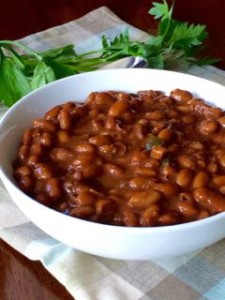 Beans refer to several genera of the family Fabaceae (Leguminosae), including the genus Phaseolus. Today’s bean-themed recipe is one of my dad’s favorite dishes: baked beans. They’re generally made with some kind of white bean, usually navy or Great Northern, which are seasoned with molasses (if Boston style) or maple syrup (for the Canadian version). The result is a savory-sweet dish that’s rich, filling, and yummy, whether for summer picnics or Sunday suppers.
Beans refer to several genera of the family Fabaceae (Leguminosae), including the genus Phaseolus. Today’s bean-themed recipe is one of my dad’s favorite dishes: baked beans. They’re generally made with some kind of white bean, usually navy or Great Northern, which are seasoned with molasses (if Boston style) or maple syrup (for the Canadian version). The result is a savory-sweet dish that’s rich, filling, and yummy, whether for summer picnics or Sunday suppers.
Baked beans were particularly popular in New England during colonial times, when they were prepared from dried beans and likely cooked overnight until ready for the next meal. Preparing beans from dried is always a good way to go—learn more here)—to reduce packaging waste and cost from cans; and it’s usually cheaper. It also ensures your beans don’t have anything you don’t need, like added salt and sugar.
Then again, I don’t always get around to saying “Hey, I’d really like to eat baked beans … in two days.”
And I’ll bet I’m not alone.
My quick and easy version starts from no-salt added cans—a pantry staple—and takes about 10 minutes to come together. Then it just sits on the stove top for an hour or two: all you need do is stir it every once in a while. This recipe yields a great big batch, too, so you’ll have some for dinner, breakfast, lunch, and the freezer.
Given I live in New England but have Canadian roots I used half molasses and half maple syrup for my own variation, which, you may note, omits the pork usually found in baked beans. The result is a planet-friendly vegetarian dish that’s ready for today’s Meatless Monday—and perfect for autumn.
Vegetarian Baked Beans
Ingredients
1 tablespoon olive oil (or other vegetable oil)
1 small onion, diced
1/2 cup poblano chile pepper, diced
4-5 cloves garlic, minced
Salt and pepper, to season
2 tablespoons molasses
2 tablespoons maple syrup
1/3 cup tomato paste
1 tablespoon dry mustard
1 tablespoon whole grain wet mustard
3 tablespoons Worcestershire sauce
1 tablespoon apple cider vinegar
1/2 teaspoon ground cloves
5 15-ounce cans Great Northern beans with their liquid (no salt added)
Insructions
Sauté onion and pepper in oil over medium heat, season with salt and pepper, and cook about 5 minutes. Add garlic and stir until fragrant. Stir in molasses and tomato paste and caramelize over low heat for approximately 5 minutes, then add remaining remaining ingredients except beans. Stir, then add the beans and their liquid. Mix over high heat and bring to a boil, then lower heat to a simmer. Cook on stovetop until liquid has reduced and thickened, at least 1 hour (and 2 or more is fine), to desired taste and viscosity: the longer it simmers, the thicker the sauce will become. Taste and reseason with salt, pepper, and sweeteners as desired. Enjoy warm, hot, cold, room temperature, or any way you please!
If you’re like most Americans, I’m willing to bet you don’t eat enough beans. The Dietary Guidelines for Americans recommend that adults consume at least three cups of beans per week for optimal health. Beans help lower “bad” cholesterol, stabilize blood sugar, and maintain healthy weight due to their fiber, vitamins, minerals, and phytonutrients (plant chemicals). Beans have also been associated with a decreased risk of heart disease and some cancers, especially when consumed as part of a plant-based diet. Beans are better for the environment compared to meaty protein foods, too, due to the amount of resources like land, water, and feed needed to raise animals—not to mention the waste and greenhouse gases generated in the process. Agricultural science has shown that consuming less meat (notably beef, pork, lamb, and poultry) is a move that will help protect the environment.
So eat your beans!
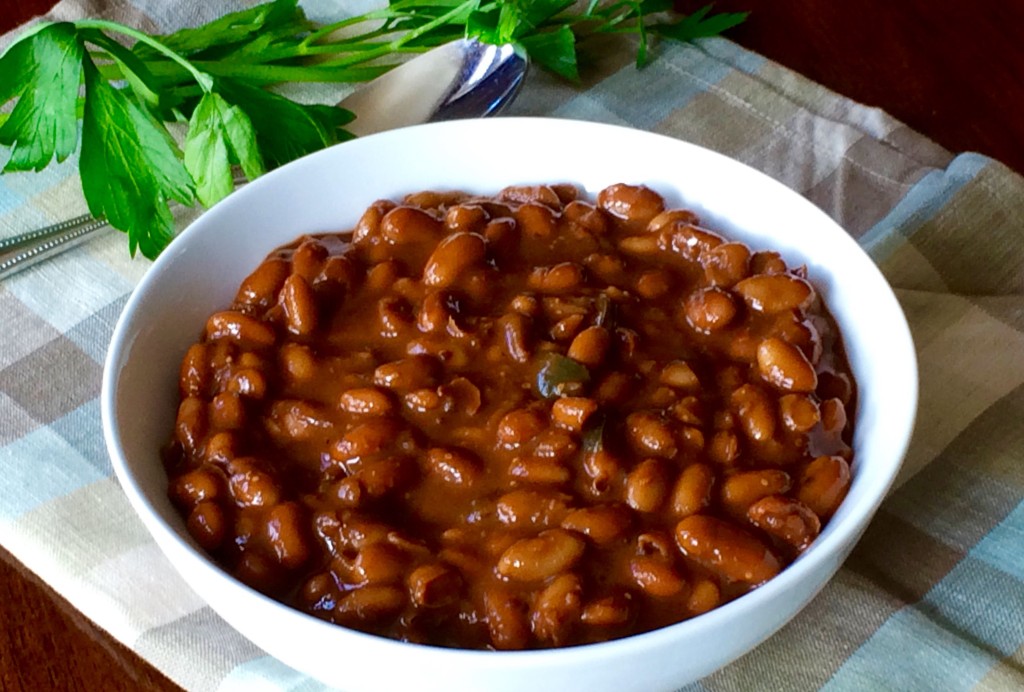
And stay tuned for a few of my favorite ways to include these luscious baked beans in a meal.
When I’m not just eating them straight out of the pot with a spoon, that is.

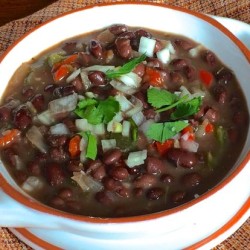
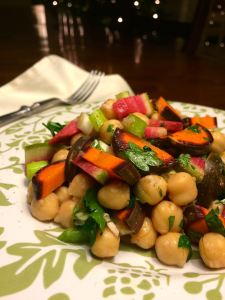
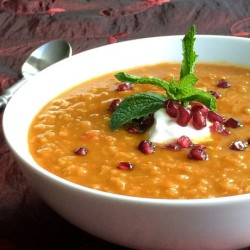

YOU NEGLECTED TO NOTE THAT BEANS ARE THE ONLY LEGUME ABOUT WHICH A SONG HAS BEEN WRITTEN.
Hmmmmm…you could be right about that! And they are, in fact, good for your body (and your heart). Thanks for this important comment! 🙂